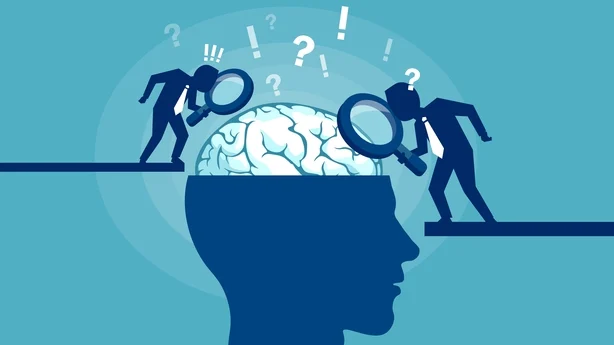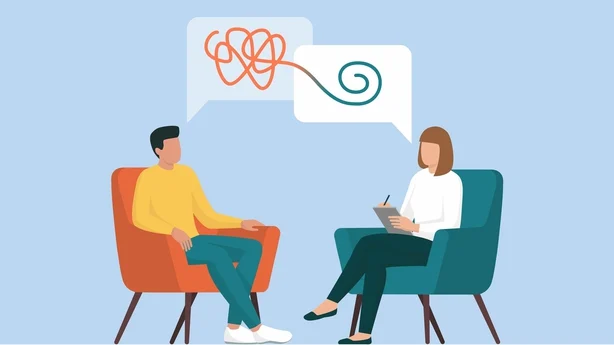Niamh Delmar is a Chartered Registered Counselling Psychologist and provides Psychological Support Workshops to work environments. Here, she writes about the dangers of self-diagnosis.
There is a growing trend of self-diagnosing mental health conditions, especially among the younger cohort.
According to research, the most common mental health conditions self-diagnosed are anxiety, depression, ADHD and Autism. In 2021, the hashtag #ADHD on Tik Tok had 2.7 billion views.
While 'Dr. Google' and social media can be a positive source of health information, it can be harmful if not used wisely. Studies have found that over 80% of people search the internet for information on their health, but many do not seek treatment, while others were five to 11 times likely to self-diagnose incorrectly.
Adolescents, in particular, tend to graviate towards personal experiences of peers, influencers and mental health conditions that are being widely discussed.
So what fuels the populartity of self-diagnosis? The digital world is saturated with symptom checklists and self assessment quizzes. Searches such as 'what mental illness do I have?" and "do I have OCD?" are easily accessible yielding results in minutes, and quick fixes suggested.

People are seeking support, and connecting with an online community makes them feel less alone. Many are looking for answers and trying to understand themselves. In the real world, there are long waiting lists, costly assessments and obstacles accessing and affording treatment, so it is easier and cheaper for them to go online.
There is also anonymity which attracts users to discuss their experiences and symptoms openly.
While platforms, such as TikTok, have brought awareness and helped to de-stigmatise disorders, there is a trend of people assigning themselves psychiatric labels they don't have. Algorithms bring users deeper down rabbit holes, flooding them with more information on the topic explored.
Symptomatology described is often based on one individual's personal experience. Taking onboard a diagnosis from strangers with no professional training is risky. Interventions offered are subjective, rather than evidence-based.
A delay in accessing professional help is also a concern, and may result in a rapid deterioration of suffering. Confirmation bias may occur as the person takes on symptoms associated with a particular disorder. They then focus on evidence to support the label ignoring alternative explanations.

What can also happen is that regular life events become pathologised. A natural human reaction to a difficult situation gets interpreted as being clinical. Experiencing a temporary emotional state may be misdiagnosed as a psychiatric condition. Many diagnoses share similar symptoms and may co-exist with another condition, or addiction may be overlooked.
If not professionally assessed, vital pieces of information are not identified such as trauma. Furthermore, there are certain medical conditions that affect mood that may need to be ruled out.
Celebrities' disclosures encourage mental health conversations, but young people may overly identify with their idols' struggles. Another limitation of DIY diagnosis is that a person's self-awareness may be limited, whereas a clinician can explore this.
Environmental factors, such a work-related stressors or unhealthy relationships, are often significant contributing factors overlooked. Once these are resolved, distressing symptoms are usually alleviated. The trend of self diagnosing also undermines those with professionally diagnosed conditions if the label is glamorised or trivialised.
Another danger is that some people may become 'stuck' behind a self-diagnosis, or jusify inappropriate behaviours. Susceptible searchers with a health anxiety may get completely overwhelmed believing they have a diagnosis they don't actually have.
On the other hand, a formal diagnosis is conducted by a professional over a period of time and may involve feedback from family and school. There are evidence based diagnostic tools and manuals to help identify mental health disorders and neuro-divergency.

Appropriate use and interpretation of these tools, takes years of training. A clinician has experience working in this area, and also bases it on interactions with the individual. It involves taking a detailed history, dialogue, specific questioning and observations.
Diagnosing yourself means you are putting yourself in the role of a Mental Health Professional or Doctor. Practitioners see beyond labels and take in to account past histories, loss, trauma and other contributing factors. Biological, social and psychological aspects of the individual are assessed. With each diagnosis, there are also variants depending on severity, duration, intensity and the impact on daily functioning. An accurate diagnosis dictates the most suitable therapy and medication, if needed.
Social media offers a wealth of helpful information on mental health, but it needs to be accessed wisely and with caution. It is safer to turn to reputable and authentic resources and not jump to conclusions.

Young people need to be educated about misinformation and alogrithms, and encouraged to turn to those close to them, rather than strangers online. Foster open communication with younger people in your lives and guide them in their digital citizenship. Discuss with your GP the symptoms you're experiencing and take it from there.
A step forward would be digital platforms fact checking more and mental health advice from non-professionals to carry warnings.
If you have been affected by issues raised in this story, please visit: www.rte.ie/helplines.
Disclaimer: The copyright of this article belongs to the original author. Reposting this article is solely for the purpose of information dissemination and does not constitute any investment advice. If there is any infringement, please contact us immediately. We will make corrections or deletions as necessary. Thank you.






